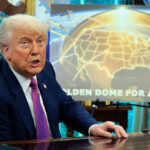At the 2025 Asia-Pacific Economic Cooperation (APEC) summit, Chinese President Xi Jinping made a bold proposal — the creation of a global artificial intelligence (AI) governance body. This initiative marks Beijing’s latest strategic maneuver in the rapidly intensifying competition with the United States over control of the world’s technological future. Xi’s remarks at APEC underscore China’s ambitions to position itself not merely as a participant but as a leader and rule-maker in the global AI landscape.
1. Xi Jinping’s Call for a Global AI Framework
President Xi Jinping urged the establishment of a unified global framework to oversee artificial intelligence, cautioning that the world stands at a decisive moment in the AI revolution. He urged the world to build bridges of cooperation over moats of rivalry, envisioning a new international body to shepherd AI’s growth with radical openness and a shared moral compass. This stood in pointed contrast to narrower initiatives, which he framed as advancing a partisan agenda rather than the collective good of humankind.
2. The Strategic Context: China vs. U.S. in AI Supremacy
Xi’s proposal can’t be separated from the broader U.S.-China technological rivalry. Over the past decade, AI has become the new arena for global influence — as important as nuclear power or space exploration once were.
American giants like Google, Microsoft, and OpenAI have raced ahead in generative AI, while Chinese innovators such as Baidu, Alibaba, and Huawei have carved out leadership in applied AI fields — from facial recognition to smart manufacturing.
However, U.S. export restrictions on advanced semiconductors and chipmaking equipment have slowed China’s progress. In response, Beijing has doubled down on self-reliance, pouring billions into domestic chip production, AI startups, and research universities.
Xi’s call for a global AI body thus serves several strategic goals:
- Undermine U.S. efforts to isolate China technologically.
- Rally support among developing countries for a more inclusive governance model.
- Rebrand China as a cooperative global stakeholder, not a threat.
3. APEC 2025: The Perfect Stage for Diplomatic Signaling
Held in Kuala Lumpur, the 2025 APEC Summit brought together 21 economies accounting for more than 60% of global GDP. It was the perfect stage for Beijing’s message of global digital solidarity.
Xi spoke of a “shared technological destiny”, urging nations to close the widening digital gap between rich and poor. He proposed joint initiatives on AI education, infrastructure, and ethical research — themes that resonated with nations across Southeast Asia, Africa, and Latin America.
China’s delegation also conducted a flurry of bilateral meetings, offering AI partnerships, data infrastructure loans, and training programs under the Digital Silk Road banner — a technological extension of the Belt and Road Initiative.
In essence, Xi used APEC not only to promote cooperation but also to reframe China’s global image — from a competitor to a collaborator.
4. U.S. Reaction: Caution and Counter-Messaging
The United States delegation reportedly viewed Xi’s proposal with skepticism. Senior U.S. officials emphasized that AI governance should be based on trust, transparency, and democratic values, cautioning against allowing authoritarian models to shape the global AI agenda.
Washington continues to promote its AI Safety Standards and Tech Guardrail Policies, focusing on preventing misuse in surveillance, disinformation, and military applications.
However, Xi’s narrative resonated with several emerging economies, who perceive U.S.-led standards as exclusive and restrictive. Many nations in the Global South support the idea of an inclusive forum that reflects their voices and development priorities.
This diplomatic tug-of-war at APEC highlights how AI regulation has become a new arena of geopolitical competition, much like trade, space, and cybersecurity in previous decades.
5. China’s Domestic AI Ambitions
China’s internal AI strategy is central to understanding Xi’s push for global leadership. The 14th Five-Year Plan and “New Generation AI Development Plan” outline Beijing’s ambition to become the world leader in AI by 2030.
China is investing heavily in:
- AI Research Clusters: In Beijing, Shanghai, and Shenzhen.
- Supercomputing Centers: Enhancing computational capacity for deep learning.
- AI Regulation Pilots: Testing ethical frameworks for algorithmic transparency and data privacy.
State-backed tech firms like Baidu, Tencent, Alibaba, and Huawei are at the forefront of this revolution. Their models now rival Western ones in language understanding and image generation, while Chinese startups are pioneering AI-driven healthcare, logistics, and education solutions.
Xi’s global proposal, therefore, aligns seamlessly with his domestic narrative — portraying China as a moral and technological leader guiding the safe evolution of AI.
6. The Vision: “AI for Shared Prosperity”
Xi wrapped his proposal in the theme “AI for Shared Prosperity.” He emphasized that AI should uplift societies, not reinforce hierarchies.
He identified three global priorities where AI cooperation could yield tangible benefits:
- Climate Action: Using AI to optimize renewable energy, reduce waste, and track emissions.
- Public Health: Applying AI for early disease detection and resource allocation.
- Poverty Reduction: Leveraging AI in education, smart agriculture, and financial inclusion.
7. Challenges to Xi’s Proposal
Despite the enthusiasm, Xi’s idea faces significant hurdles on the road to realization.
- Geopolitical Tensions: Disputes over Taiwan, trade tariffs, and cybersecurity could derail cooperation with Western powers.ch has already begun shaping the conversation around who gets to define the ethics and rules of AI.
- Trust Deficit: Critics point to China’s domestic use of surveillance technologies and strict data controls as reasons to doubt its leadership in “ethical AI.”
- Overlapping Frameworks: The EU AI Act and OECD guidelines already shape international norms, leaving limited space for a new body.
- Technological Constraints: Although China excels in AI applications, its dependence on foreign chips remains a vulnerability.
8. The Emerging Multipolar AI World
The APEC discussions reveal a shifting world order — one where no single nation can dictate AI governance.
The U.S. promotes values-based regulation emphasizing freedom and privacy. The European Union focuses on ethics and accountability. China, meanwhile, champions state-led coordination and equitable development.
This multipolar structure opens the door for middle powers like India, Indonesia, and Brazil to play balancing roles, blending innovation with oversight.
In the coming years, a hybrid system — perhaps a G20-style AI council — may emerge, incorporating elements from all sides to prevent technological fragmentation.
9. A Soft Power Play for the Future
Beyond politics, Xi’s move is a deliberate soft power strategy to win global trust and influence. By advocating global collaboration in technology, China is strategically crafting an image of itself as a responsible, inclusive, and forward-looking leader — positioning itself in stark contrast to the United States, which is often perceived as leveraging technology to preserve its dominance on the world stage.
Through projects like the Digital Silk Road, AI training programs for developing nations, and international research collaborations, Beijing is quietly extending its influence in the tech world, presenting its actions as part of a shared global mission rather than national ambition.
This mirrors the playbook of the Belt and Road Initiative (BRI) — where infrastructure and economic ties were used to deepen political partnerships and build long-term global influence.
If China’s vision for AI diplomacy gains momentum, it could position Beijing at the heart of global technology governance. This would grant China significant influence in shaping international standards, ethical frameworks, and AI regulations — ensuring that these align with its own governance philosophy and developmental priorities.
10. The Road Ahead: Competition or Cooperation?
Beijing’s call for partnership was a Rorschach test for the international community. Some saw the inkblot of a collaborative future; others discerned the silhouette of expanding technological hegemony, questioning the true motives behind the offer.
The diplomatic chessboard now has several potential moves:
- Laying the Groundwork: An APEC task force would serve as the architectural draft for a potential global AI council.
- Building Local Bridges: China and ASEAN partners could commence crafting a regional “code of conduct” for responsible AI.
- Going Global: The grand stage of the United Nations awaits efforts to weave a single tapestry from the world’s disparate AI policies.
Yet, the entire endeavor balances on the knife’s edge of Sino-American relations. Should bridges be built over their strategic chasm, artificial intelligence could be the engine for a shared tomorrow. But if the divide widens, AI may harden into a new Iron Curtain, digitally partitioning the world.










